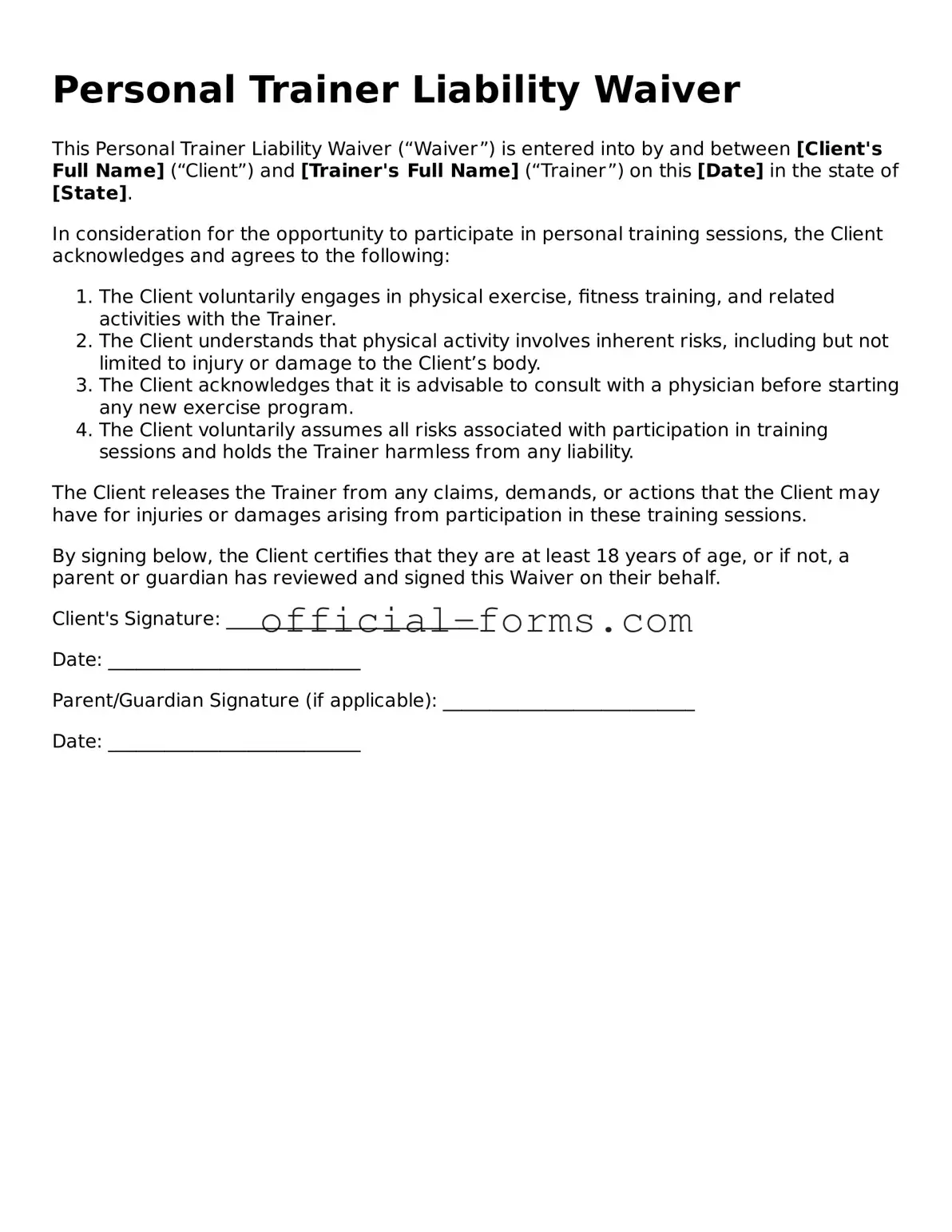Attorney-Verified Personal Trainer Liability Waiver Template
A Personal Trainer Liability Waiver form is a legal document designed to protect personal trainers from liability in case of injuries or accidents that may occur during training sessions. By signing this waiver, clients acknowledge the inherent risks associated with physical activity and agree to release the trainer from certain legal claims. Understanding this form is essential for both trainers and clients to ensure a safe and informed training environment.
Open My Personal Trainer Liability Waiver Now
